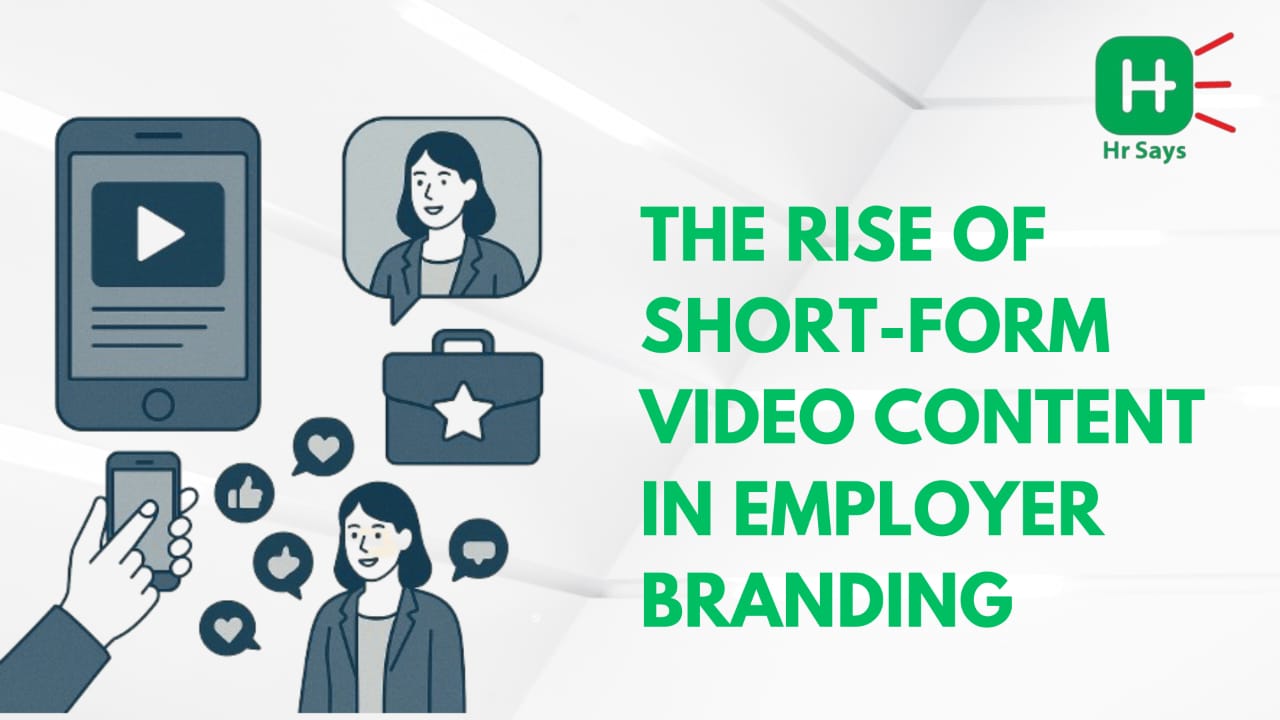Imagine scrolling through your phone during a coffee break. A 30 second video pops up, a glimpse of a team laughing over lunch, an employee sharing their journey from intern to manager or a sneak peek into a company’s vibrant office culture. Before you know it, you have paused, smiled and maybe even thought, I would love to work here. This is the magic of short form video content, and Indian companies are quickly realizing its power to attract talent.
In a country where over 700 million people use smartphones and platforms like Instagram Reels, YouTube Shorts and Snapchat spotlights dominate screen time, short videos have become the language of choice for storytelling. For employers, this trend is not just about staying relevant, it is about humanizing their brands and connecting with a generation that values authenticity over polish. Let us unpack why these bite sized clips are reshaping how companies engage potential candidates.
Why short form videos work:
The average human attention span has dropped to 8 seconds, shorter than a goldfish’s. For employers, this means job descriptions buried in text or lengthy corporate videos rarely cut through the noise. Short form content however fits perfectly into this fast paced digital lifestyle. A 15 second clip showing a day in the life of an engineer at a Pune tech startup or a behind the scenes look at a Mumbai fashion brand’s design team can convey more emotion and culture than a five page careers page.
Relatability:
Gen Z and millennials, who form 65% of India’s workforce, crave authenticity. They want to see real people, real workplaces and unfiltered moments. Short videos thrive here. For instance, a clip of employees celebrating Diwali in the office, complete with rangoli and homemade sweets, feels far more genuine than a scripted ad. Companies like Zomato and Flipkart have mastered this by showcasing employee testimonials, team challenges and even bloopers, content that says, we are not just a company; we are a community.
Companies leveraging trends:
Gone are the days of listing perks like free snacks or flexible hours in bullet points. Employers now use videos to demonstrate these benefits. A Tata Motors video might show engineers testing electric vehicles in Rajasthan’s deserts, while a startup in Bengaluru could highlight its weekly innovation hour where employees brainstorm over chai. These visuals stick because they tell a story, not a sales pitch.
Employee advocacy:
Who better to represent a company than its own team ? Short videos featuring employees, whether discussing projects, sharing growth stories or mentoring juniors; build trust. Infosys, for example, uses Reels to spotlight young coders from tier 2 cities who have risen through the ranks. Such content does not just attract candidates; it sparks pride among current employees, turning them into brand ambassadors.
Interactive engagement:
Polls, Q&A sessions and career tip series invite viewers to engage. A Deloitte India video asking, what is your dream workplace ?
or a Mahindra Group clip challenging followers to guess an employee’s role based on their desk setup turns passive viewers into active participants. This two way interaction makes the brand feel approachable, not corporate.
Getting it right:
Candidates can spot staged content from a mile away. Instead of glossy productions, focus on raw moments; team meetings, festival celebrations or even casual coffee breaks. A video of a Wipro employee explaining how the company supported her during maternity leave resonates deeper than a generic diversity statement.
Prioritize storytelling:
Every company has unique stories. Maybe it is a delivery executive at Swiggy who became a regional manager or a TCS veteran sharing how the company adapted during the pandemic. Structure these narratives with a beginning, middle and end, even in 30 seconds. Emotion drives shares and saves.
Optimize for mobile:
Vertical videos, bold captions and quick cuts work best. Since most viewers watch without sound, use text overlays in Hindi or regional languages to maximize reach. A MakeMyTrip video showcasing its Goa office with vibrant visuals and a peppy Konkani soundtrack, for instance, feels tailored for its audience.
Closing thought:
Short form videos are not just a trend, they are a cultural shift in how companies communicate. For India’s young, tech savvy workforce, these snippets offer a window into workplaces that value transparency, inclusivity and fun. As the lines between employer and entertainer blur, the brands that succeed will be those that embrace imperfection, celebrate their people and remember one truth: in a world of endless scrolling, it is the human touch that makes you stop.
So, the next time you see a 20 second clip of a team dancing to a Bollywood hit at an office party know this, it is not just a video. It is a conversation starter, a culture carrier and maybe, the reason someone decides to hit apply.

 In a country where over 700 million people use smartphones and platforms like Instagram Reels, YouTube Shorts and Snapchat spotlights dominate screen time, short videos have become the language of choice for storytelling.
In a country where over 700 million people use smartphones and platforms like Instagram Reels, YouTube Shorts and Snapchat spotlights dominate screen time, short videos have become the language of choice for storytelling.












.jpeg)












.jpeg)